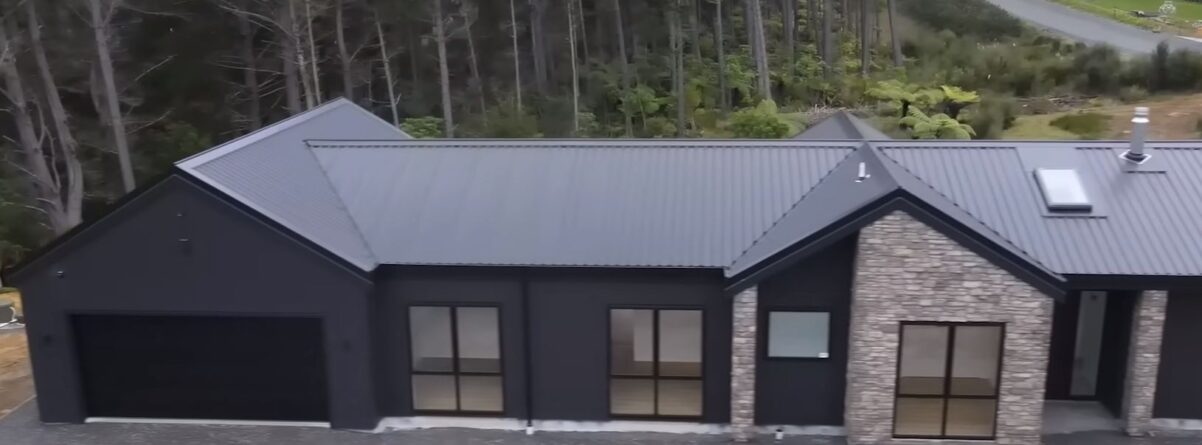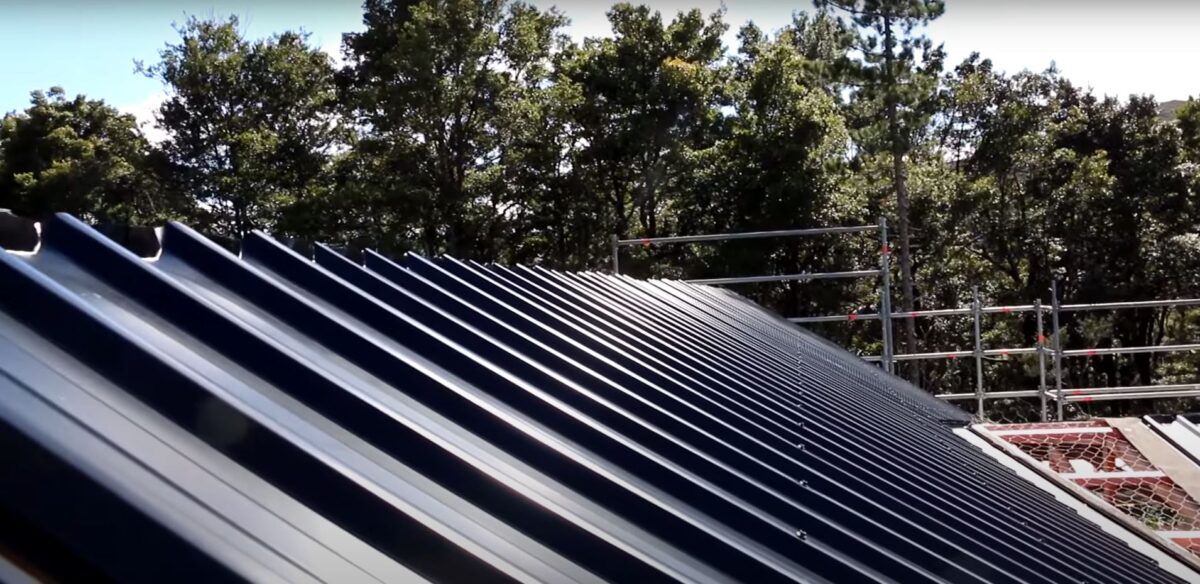The Intricacies of Roof Design: Price Impacts and Considerations
Roof Complexity and Price Dynamics
Roof complexity refers to the design intricacies of a roof, including its pitch, number of corners, ridges, valleys, and any dormers or skylights. As the design becomes more complex, the costs associated with roofing materials and labour can increase significantly. Complexity requires additional materials and specialised skills, often leading to longer installation times.
Environmental Considerations in Roofing
Auckland’s unique climatic conditions, such as frequent rainfall and high humidity, demand careful consideration when choosing roofing materials and designs. Not only does the material need to withstand these conditions, but complex designs with more valleys and corners can also present drainage challenges.
Breaking Down Re-roofing and Restoration Costs
Simple Designs: Flat roofs or those with minimal pitch variations are typically the least expensive, starting from around NZD 140 per square metre.
Moderate Complexity: Roofs with a few ridges, valleys, and corners can range from NZD 215 to NZD 275 per square metre.
High Complexity: Designs featuring multiple angles, skylights, or dormers can push prices upwards of NZD 400 per square metre.
Note: These costs encompass both material and labour.
Concrete Roof Tiles and Options
Concrete roof tiles are a popular choice in Auckland, thanks to their durability and resistance to local weather conditions. Here’s a look at some tile options and their relative costs:
Plain Tiles: Traditional and versatile, starting from NZD 75 per square metre.
Interlocking Tiles: Designed to lock into one another, providing extra security against wind and rain, priced around NZD 90 per square metre.
Pantiles: With a distinct curved design, they can start from NZD 100 per square metre.
Safety First: Auckland’s Health and Safety Mandates
The roofing industry in Auckland operates under stringent health and safety requirements. For roofs with a significant pitch, safety harnesses and scaffolding are non-negotiable, potentially adding to the overall cost.
Moreover, for areas such as Western Springs, where there are more historic buildings, the emphasis on preserving architectural integrity might mean additional safety precautions, further influencing costs.
Auckland Council Bylaws and Impacted Suburbs
Roof restorations and installations in Auckland aren’t just about selecting a design and getting to work. Local bylaws and regulations can influence your choices and the associated costs:
Western Springs: Home to many heritage buildings, the local council mandates the preservation of architectural styles. As such, choosing materials and designs in line with these requirements might attract premium prices.
Torbay and Hillsborough: Specific codes in these suburbs can impact the roofing materials you’re permitted to use, potentially influencing costs. It’s crucial to consult with local council documentation or liaise with a professional to understand these regulations fully.
Summary Table of Costs Breakdown
| Roof Complexity | Estimated Cost (NZD) | Pros | Cons | Installation Variables | Suitability |
| Simple | From 140/sqm | Cost-effective; quicker install | Limited design flexibility | Minimal scaffolding required | Best for modern constructions |
| Moderate | 215-275/sqm | Balanced design & cost | Potential for more drainage challenges | Medium scaffolding & safety gear | Suitable for most homes |
| Highly Complex | Over 400/sqm | Aesthetic appeal | Highest cost; longer installation | Extensive scaffolding & safety gear | Heritage or custom homes |
| Tile Type | Cost (NZD) | Advantages | Drawbacks | Installation Factors | Best Used For |
| Plain | From 75/sqm | Versatile; traditional | Standard appearance | Straightforward installation | Most residential homes |
| Interlocking | Around 90/sqm | Wind & rain resistance | Slightly higher cost | Moderate installation complexity | Coastal areas |
| Pantiles | From 100/sqm | Distinctive design | Premium pricing | Requires skilled installation | Heritage or styled homes |
When considering a re-roofing or roof restoration project in Auckland, understanding the various factors that can influence cost is crucial. Engaging with professionals in the industry can provide insights tailored to your property’s unique requirements and ensure compliance with all local regulations.
Roof Design and Price Frequently Asked Questions
How does the complexity of my roof’s design affect the final cost?
The more intricate your roof design – with aspects like varying pitches, multiple corners, ridges, valleys, and additional features like dormers or skylights – the higher the cost. Such complexity demands more materials and skilled labour, often translating to a higher price point.
Why are concrete roof tiles popular in Auckland?
Concrete roof tiles offer durability and resilience, making them ideal for Auckland’s unique climatic challenges, including frequent rain and high humidity. They also come in various styles, catering to both modern and traditional homes.
How do Auckland’s health and safety regulations impact roofing costs?
Strict health and safety standards in Auckland, especially for roofs with steep pitches, mandate the use of equipment like harnesses and scaffolding. These requirements, while ensuring the safety of workers, can add to the overall roofing costs.
Are there any specific Auckland council bylaws I should be aware of when re-roofing?
Yes, local council bylaws can influence your roofing decisions. For instance, in Western Springs, there’s an emphasis on preserving the architectural integrity of heritage buildings, which can affect material and design choices, potentially at a premium.
Why do some suburbs have specific roofing codes?
Suburbs like Torbay and Hillsborough have specific codes to maintain a particular aesthetic, protect the environment, or preserve the historical significance of the area. These regulations ensure that new or restored roofs are in harmony with the suburb’s character.
Do intricate roof designs require more maintenance?
Generally, more complex designs have more corners, valleys, and potential spots for water to gather, leading to a higher likelihood of issues like leaks or moss growth. Thus, they might necessitate more frequent maintenance checks.
Can I reduce costs by simplifying my roof design without compromising on aesthetics?
Certainly. Working with experienced professionals can help you strike a balance between design and budget. They can suggest modifications that retain aesthetic appeal while reducing complexity and, by extension, costs.

